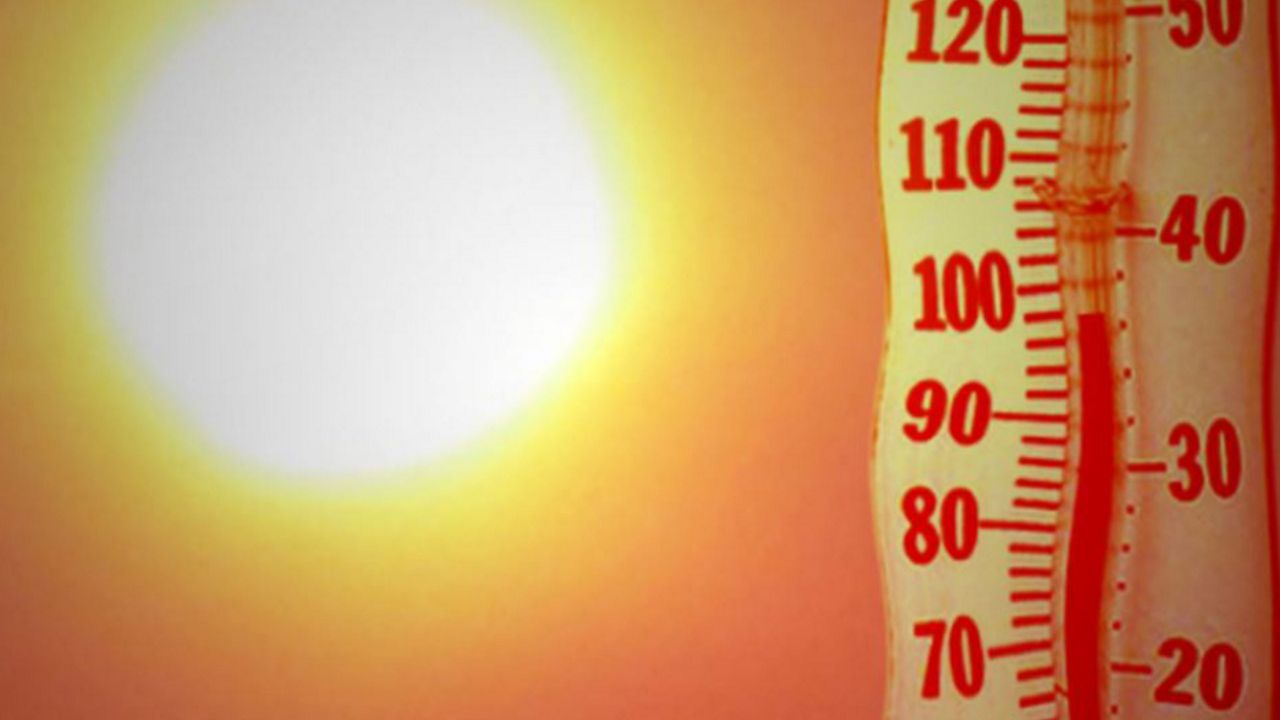Pressure: How temperature differences affect pressure
TAMPA, Fla. -- Pressure means everything when it comes to forecasting weather and learning about global patterns. High pressure gives us sunny weather and low pressure gives us stormy weather. This lesson will be broken into two parts over the next two weeks. This week will focus on the relationship between temperature and pressure. Next week we will learn about how pressure controls our weather patterns.
First, let’s start off by defining air pressure. It is the weight (force) of the Earth’s atmosphere pressing down on any object on the Earth’s surface. There are many units to describe air pressure. The two most common metric units meteorologist use are “Inches of Mercury (Hg)” or “millibars (mb).” You may hear meteorologist refer to these units when describing the strength of a hurricane. There is a cool tool used to measure air pressure and it is called a barometer.
BELOW: Take Nick's Weather Quiz!
Here’s a fun fact! The average atmospheric pressure is 1013.25 mb or 29.92”Hg. What does this mean? It translates down to 14.7 lbs per square inch! Think about that. Take out your pencil and let’s do some quick math. Let’s calculate the approximate weight of the atmosphere over a standard piece of paper with the dimensions of 8.5” x 11”?
Find the area of the piece of paper which equals 93.5 square inches. Multiply that value by 14.7 lbs per square inch and you get a weight of 1,374 pounds of air over that sheet of paper. Now that is a lot of weight!
Did you know more than 2,000 pounds of air is resting on our heads every day? So why aren’t we crushed by it? Thank goodness for a strong vertebrae! Our bodies exert pressure too and these forces are balanced. Equilibrium is a great thing!
Now that you understand the standard pressure of our atmosphere and what it means, let’s talk about how this influences weather. We know that pressure varies greatly around our planet and the pressure difference generates wind and storms.
Why do we have a change in pressure around the planet? This has to do with temperature and the heating of the planet from the sun. The tilt of our planet causes the globe to heat up at different rates. Some areas like the equator are warmer than others, especially the poles. Cold air is more dense, therefore it has a higher pressure. Warm air is less dense and has a lower pressure associated with it.
As the sun heats the ground, the air near the ground warms. Remember, heat is less dense than cold air so the warm air will rise. This rising motion creates a natural vacuum lowering the air pressure at the Earth’s surface.
Think of a hot air balloon. When you heat the air inside the balloon, it causes the balloon to rise because the heated air is less dense than the colder air around it.
Cold air on the other hand can create large areas of high pressure because cold air is more dense and hovers near the ground. Think back to last week’s lesson when we demonstrated how cold fronts work. The sinking air can create areas of high pressure at the Earth’s surface.
When high pressure is in control, the air sinks. Sinking air compresses the atmosphere and inhibits clouds to form. Sinking air also pushes down toward the ground so the weight above you is greater than on a standard day.
The opposite is true with a low pressure system. With low pressure, air rises, cools, and condenses into storm clouds, which may lead to a rainy day. Since the rising column of air weighs less, the air pressure is lower. Think back to our water cycle lesson. Water vapor rises, cools, condenses into a cloud, and later produces rain.
Let’s demonstrate how temperature pressure relate to one another in this crushing experiment.
Experiment: A collapsing can
Purpose: To demonstrate how pressure changes with temperature
What you need:
- ADULT SUPERVISION
- Empty soda can
- Stove top of burner
- Large metal or glass bowl filled with ice water
- Kitchen Tongs
- Goggles, gloves, and apron (protective gear)
Procedure:
1. Fill the empty metal or glass bowl with ice water
2. Turn the stove top to a medium heat
3. Fill the empty soda can with 2 inches of water
4. Place the soda can on the stove top
5. Let the water boil. This is when you will see steam escaping the top of the can
6. With an adult, turn the stove off and use the tongs to take the hot soda can and swiftly flip it over into the bowl filled with ice cold water.
7. Observe your findings
Results: The can crushed immediately after placing it in the bowl of ice cold water.
Conclusion: The heating of the can turned some of the water into water vapor. The warm water vapor was less dense than the surrounding environment causing it to rise out of the can. It was visible as steam. Heating the can causes the water particles to expand and therefore the total volume of water inside the can decreased as much of it was lost due to the water vapor escaping through the top.
When the can was flipped into a pool of ice cold water, the can collapsed on itself. The water vapor that was left inside the can quickly cooled and condensed into water droplets, creating a vacuum. Suddenly the pressure outside the can is greater than inside the can, causing it to collapse on itself!
Next week, we will learn how pressure differences causes the wind to blow.



